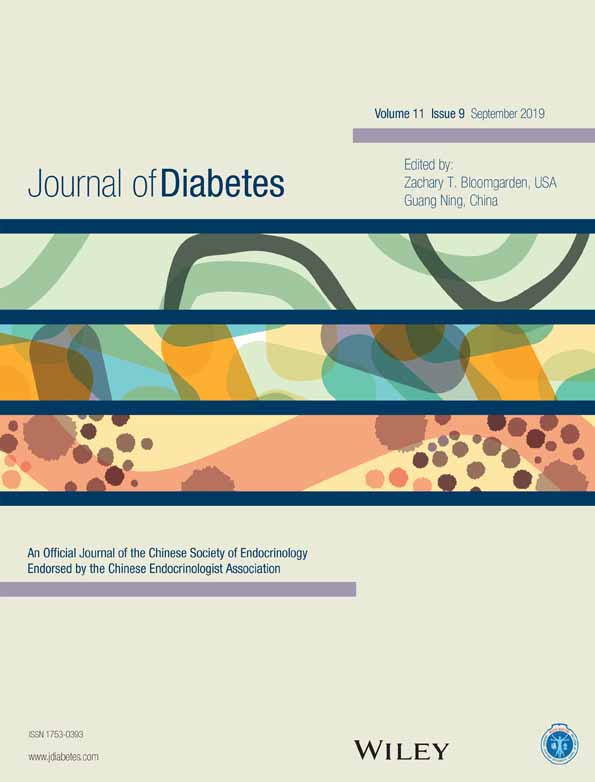Real-world experience of metformin use in pregnancy: Observational data from the Northern Territory Diabetes in Pregnancy Clinical Register
妊娠期使用二甲双胍治疗的真实世界经验:来自北部地区妊娠期糖尿病临床登记表的观察性数据
Funding information The Northern Territory Diabetes in Pregnancy Partnership is funded by an Australian National Health and Medical Research Council (NHMRC) Partnership Project Grant (1032116), with additional support from NHMRC Program Grant 631974 and Global Alliance Chronic Disease NHMRC Grant 1092968. LM-B is supported by an NHMRC Practitioner Fellowship (1078477). The views expressed in this publication are those of the authors and do not reflect the views of the NHMRC. The funders had no role in study design, data collection and analysis, decision to publish or preparation of the manuscript.
Abstract
enBackground
In Australia's Northern Territory, Indigenous mothers account for 33% of births and have high rates of hyperglycemia in pregnancy. The prevalence of type 2 diabetes (T2D) in pregnancy is up to 10-fold higher in Indigenous than non-Indigenous Australian mothers, and the use of metformin is common. We assessed birth outcomes in relation to metformin use during pregnancy from a clinical register.
Methods
The study included women with gestational diabetes (GDM), newly diagnosed diabetes in pregnancy (DIP), or pre-existing T2D from 2012 to 2016. Data were analyzed for metformin use in the third trimester. Regression models were adjusted for maternal age, body mass index, parity, and insulin use.
Results
Of 1649 pregnancies, 814 (49.4%) were to Indigenous women, of whom 234 (28.7%) had T2D (vs 4.6% non-Indigenous women; P < 0.001). Metformin use was high in Indigenous women (84%-90% T2D, 42%-48% GDM/DIP) and increased over time in non-Indigenous women (43%-100% T2D, 14%-35% GDM/DIP). Among Indigenous women with GDM/DIP, there were no significant differences between groups with and without metformin in cesarean section (51% vs 39%; adjusted odds ratio [aOR] 1.25, 95% confidence interval [CI] 0.87-1.81), large for gestational age (24% vs 13%; aOR 1.5, 95% CI 0.9-2.5), or serious neonatal adverse events (9.4% vs 5.9%; aOR 1.32, 95% CI 0.68-2.57). Metformin use was independently associated with earlier gestational age (37.7 vs 38.5 weeks), but the risk did not remain independently higher after exclusion of women managed with medical nutrition therapy alone, and the increase in births <37 weeks was not significant on multivariate analysis.
Conclusions
We found no clear evidence of any adverse outcomes related to the use of metformin for the treatment of hyperglycemia in pregnancy.
Abstract
zh摘要
背景
在澳大利亚北部地区, 原住民母亲的婴儿出生率占33%, 她们妊娠期间出现高血糖的风险很高。原住民母亲在妊娠期间的2型糖尿病(T2D)患病率与非原住民澳大利亚母亲相比较要高10倍, 并且经常使用二甲双胍治疗。我们利用临床登记表数据评估了妊娠期间使用二甲双胍治疗与出生结果之间的关系。
方法
这项研究从2012至2016年纳入了妊娠糖尿病(gestational diabetes, GDM)、妊娠期新诊断糖尿病(newly diagnosed diabetes in pregnancy, DIP)以及既往已经存在T2D的妇女。对妊娠晚期使用二甲双胍的数据进行了分析。根据母亲年龄、体重指数、产次以及胰岛素使用情况校正了回归模型。
结果
在1649名孕妇中有814名(49.4%)为原住民妇女, 其中234名(28.7%)为T2D(非原住民妇女T2D比例为4.6%;P < 0.001)。原住民妇女的二甲双胍使用率更高(在T2D中为84%-90%, 在GDM/DIP中为42%-48%), 并且在非原住民妇女中随着时间的推移使用率在上升(在T2D中为43%-100%, 在GDM/DIP中为14%-35%)。在合并GDM/DIP的原住民妇女中, 使用二甲双胍治疗组与不使用二甲双胍治疗组之间的剖宫产率(分别为51%与39%; 校正后的odds ratio [aOR]为1.25, 95%置信区间[CI]为0.87-1.81)、出现大胎龄率(分别为24%与13%;aOR为1.5, 95% CI为0.9-2.5)、新生儿出现严重不良事件率(分别为9.4%与5.9%;aOR为1.32, 95% CI为0.68-2.57)都没有显著性差异。使用二甲双胍治疗与胎龄更小(分别为37.7与38.5周)独立相关, 但是将单独接受药物营养治疗的妇女排除之后, 这种风险没有独立地处于较高的水平, 并且多变量分析显示<37周的出生率并没有显著地升高。
结论
我们没有发现任何与妊娠期间高血糖妇女使用二甲双胍治疗出现不良结果相关的明确证据。




